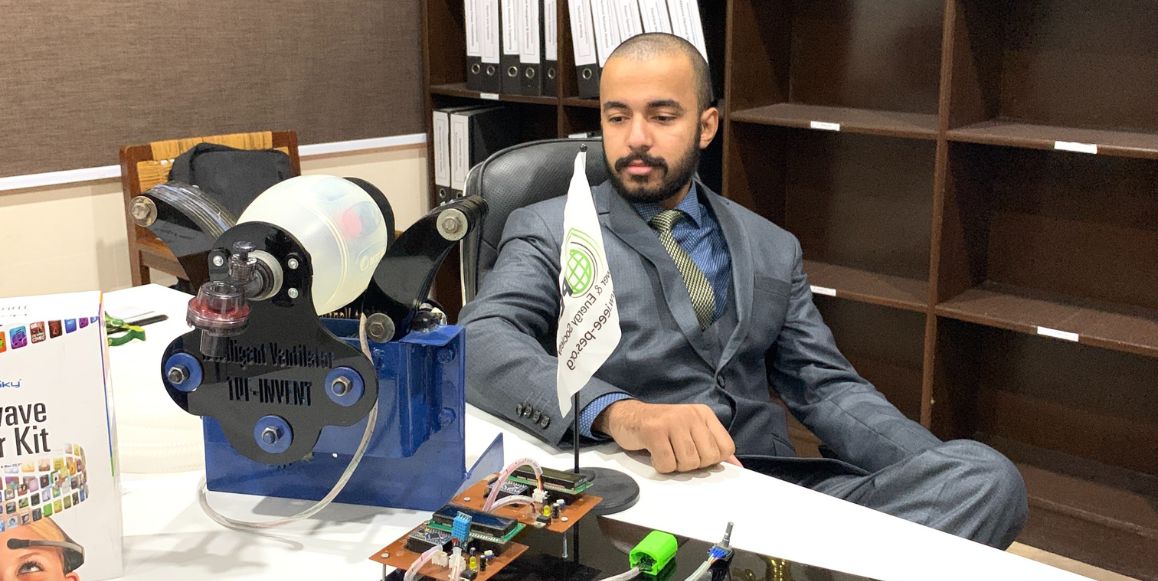Closed-Loop Intelligent Ventilator

Closed-Loop Intelligent Ventilator
- Abstract
- Objective
- Terminology
- Technical Implementation
- Development Process
Abstract
The closed-loop intelligent ventilator with an Ambu bag was developed to address the critical ventilator shortage during the COVID-19 pandemic in Pakistan. This innovative device features two operational modes: patient assist mode and doctor mode, allowing for precise control of breathing rates and ventilation parameters. Leveraging the ESP32 microcontroller, this ventilator ensures reliable and efficient respiratory support for patients in need.
Objective
The primary objective of this project was to design and develop a cost-effective, reliable, and intelligent ventilator that could be rapidly deployed in response to the ventilator shortage during the COVID-19 crisis. The ventilator aims to provide:
- Automated and adaptive ventilation for patients requiring respiratory support.
- Two operational modes: Patient Assist Mode and Doctor Mode, to accommodate varying medical needs.
- Precise control over breath rates and tidal volume, ensuring adequate ventilation.
- A user-friendly interface for medical professionals to monitor and adjust ventilator settings.
Terminology
- Closed-Loop Control: A feedback system that automatically adjusts ventilator parameters based on real-time patient data to maintain desired respiratory conditions.
- Patient Assist Mode: A mode where the ventilator supports the patient’s spontaneous breathing efforts, providing breaths only when the patient initiates them.
- Doctor Mode: A fully controlled mode where medical professionals set specific parameters for breath rates and tidal volume, overriding the patient’s spontaneous efforts.
- Ambu Bag: A manual resuscitator used in emergency situations to provide positive pressure ventilation to patients who are not breathing or not breathing adequately.
- ESP32 Microcontroller: A powerful, low-cost microcontroller with integrated Wi-Fi and Bluetooth capabilities, used to control the ventilator functions.
- Breath Rate: The number of breaths delivered by the ventilator per minute.
- Tidal Volume: The volume of air delivered to the lungs with each ventilator breath.
- COVID-19: A highly infectious respiratory illness caused by the novel coronavirus SARS-CoV-2, leading to severe respiratory distress and increased demand for ventilators.
Technical Implementation
The ventilator system integrates the following key components and technologies:
- ESP32 Microcontroller: Central to the ventilator’s control system, the ESP32 handles sensor data processing, motor control for the Ambu bag, and communication with the user interface.
- Sensors: Pressure and flow sensors provide real-time data to the ESP32, enabling precise control and monitoring of respiratory parameters.
- Motor and Actuator System: Mechanically compresses and releases the Ambu bag based on commands from the ESP32, delivering controlled ventilation.
- User Interface: A touchscreen or simple display and control knobs/buttons allow healthcare providers to switch between modes, set breath rates, and adjust other parameters.
- Power Supply: A reliable power system ensuring uninterrupted operation of the ventilator.



Development Process
The development of the intelligent ventilator spanned one year, involving several critical phases:
- Requirement Analysis: Understanding the medical requirements and constraints, particularly in the context of the COVID-19 crisis.
- Design and Prototyping: Creating initial designs and prototypes to test the feasibility of the control systems and mechanical components.
- Hardware Integration: Integrating the ESP32 microcontroller with sensors, actuators, and the Ambu bag.
- Software Development: Writing firmware for the ESP32 to handle closed-loop control, user inputs, and data processing.
- Testing and Validation: Rigorous testing to ensure reliability, safety, and performance of the ventilator under various scenarios.
- Deployment: Preparing the ventilator for production and distribution to healthcare facilities in need.
This project not only addresses the immediate need for ventilators during a global pandemic but also sets the foundation for future innovations in medical device development, leveraging modern microcontroller technology and intelligent control systems.
